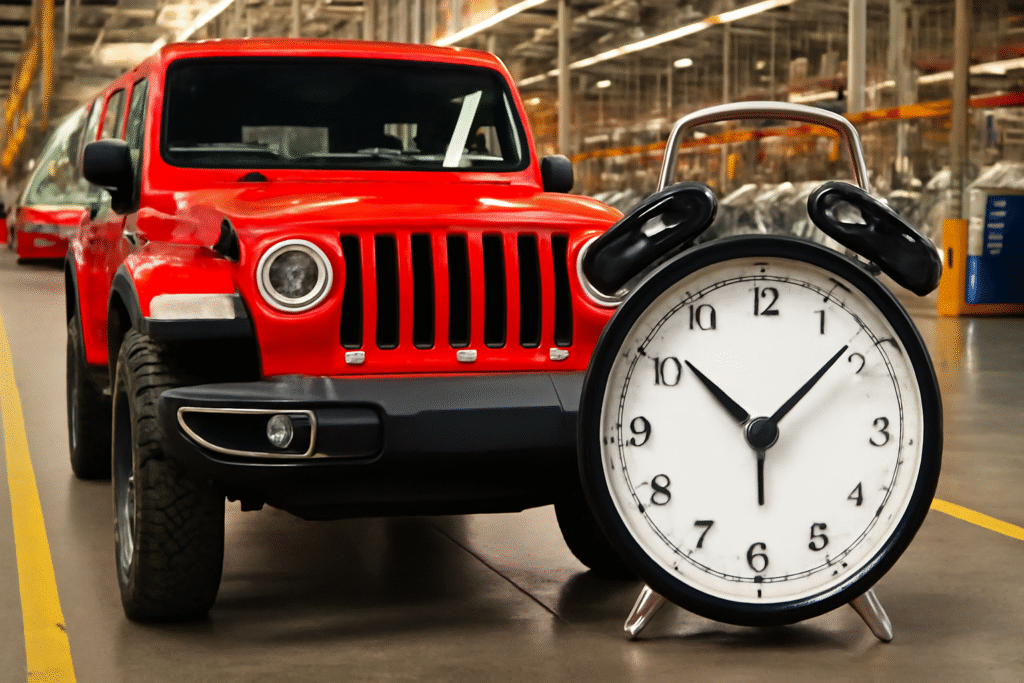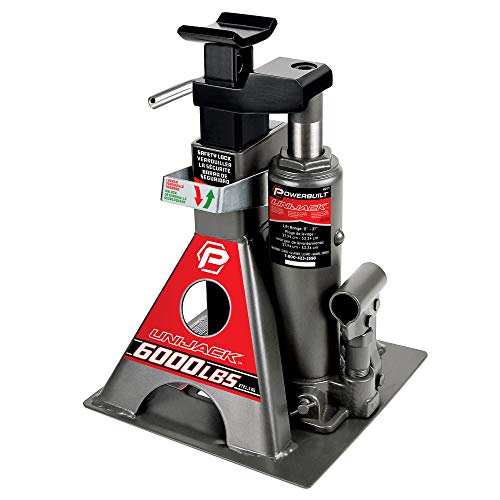It takes about 12-16 hours to build a Jeep from start to finish. A Jeep is a highly versatile and customizable vehicle that is built on a sturdy chassis and requires meticulous attention to detail during assembly.
The process involves various stages, including engine installation, bodywork, painting, and interior finishing. Each step requires skilled craftsmanship and adherence to quality standards to ensure a durable and reliable final product. Building a Jeep is not a quick process, but the time invested ensures that every component is properly integrated, resulting in a high-performance vehicle capable of tackling various terrains.
So, if you’re considering building a Jeep, be prepared to invest both time and effort to create a truly exceptional off-road vehicle.
Factors That Impact The Time Required For Jeep Construction
Factors such as the complexity of the Jeep model and the customization and personalization requests play a crucial role in determining the time required for Jeep construction. The more intricate the design and features, the longer it will take to build the Jeep.
Additionally, customizations and personalization requests can further prolong the construction process as they involve specific modifications and unique additions. Another factor that affects the time required is the availability of parts and components. If certain parts are not readily available, it may cause delays in the construction timeline.
It is essential to ensure the availability of all necessary components to avoid any unnecessary setbacks. Considering these factors is vital to estimate the time needed to build a Jeep accurately.
Understanding The Stages Of Jeep Construction
Understanding the stages of Jeep construction starts with the design and engineering phase. This is where the blueprint for the vehicle is created, taking into account functionality and aesthetics. Once the design is finalized, the sourcing of materials and components begins.
Various parts like the engine, chassis, and body panels are acquired from different suppliers. Finally, the assembly and production process takes place, where these components are put together to build the Jeep. This involves a series of steps, including welding, painting, and quality control checks.
The entire process involves coordination and precision, which ultimately determines how long it takes to build a Jeep. From the initial design phase to the finished product, multiple stages are involved in creating these iconic vehicles.
Design And Engineering Phase
The design and engineering phase of building a Jeep involves 3D modeling and prototyping. This stage is crucial as it allows the designers to create a virtual representation of the vehicle and test its functionality. Through 3D modeling, they can visualize the Jeep’s design and make any necessary adjustments before moving forward.
Prototyping then takes place to produce physical models of different parts of the Jeep, allowing for further examination and refinement. This iterative process ensures that every aspect of the design is thoroughly tested and optimized. By testing and refining the design, engineers can address any issues and ensure that the final product meets the desired specifications.
This phase sets the foundation for a successful construction process, paving the way for the next stages of building a Jeep.
Sourcing Of Materials And Components
The sourcing of materials and components involved in building a Jeep is an intricate process. Every aspect of supply chain management is essential for a successful production. Vendor selection and evaluation play a crucial role in ensuring the quality and reliability of the materials and components.
Careful consideration is given to factors such as pricing, reputation, and timeliness. The chosen vendors must meet the required standards and specifications set by the manufacturer. Their ability to consistently deliver high-quality products is of utmost importance. Effective supply chain management ensures a smooth flow of materials and components from the vendors to the production line.
Cooperation and communication between all parties involved are essential for the timely completion of the Jeep building process.
Assembly And Production Process
Building a Jeep is a detailed process that involves various stages. The assembly and production take time. Firstly, the body construction and chassis assembly are essential steps. All the parts come together to form the sturdy frame of the Jeep.
Next, the engine and electrical components are installed, ensuring the vehicle’s functionality and performance. This stage involves careful precision and attention to detail. Finally, interior and exterior finishing touches are added, giving the Jeep its unique appearance and style. These elements include the dashboard, seats, and any additional features like roof racks or special paint finishes.
Overall, the entire process of building a Jeep requires meticulous craftsmanship and expertise.

Average Timeframes For Each Stage In The Construction Process
The time it takes to build a Jeep can vary based on different stages in the construction process. Design and engineering can take X weeks/months as it involves careful planning and conceptualization. Sourcing of materials and components, which is an essential step, can also take X weeks/months.
This ensures that all the necessary parts are acquired to meet the desired specifications. Finally, the assembly and production process takes X weeks/months, as the various components are put together to create the final product. During this stage, quality control measures are implemented to ensure that the Jeep meets the required standards.
Overall, the entire construction process requires careful attention to detail and can take a significant amount of time.
Case Study: Building A Jeep Wrangler
Building a Jeep Wrangler is a detailed process that requires time and expertise. The overall timeline can vary depending on various factors such as customization options and availability of parts. The Jeep Wrangler model is a popular choice among off-road enthusiasts due to its ruggedness and versatility.
From the initial design phase to the final assembly, each step is carefully executed to ensure the highest quality. The construction process involves tasks such as frame fabrication, engine installation, suspension setup, and bodywork. Skilled technicians meticulously work on each component, ensuring that everything fits together seamlessly.
Attention to detail is crucial throughout the process to guarantee that the end product meets the customer’s expectations. While the construction of a Jeep Wrangler may take time, the result is a durable and capable vehicle ready to take on any adventure.
Step 1: Design And Engineering
The process of building a Jeep starts with research and initial design concepts, followed by computer-aided design (CAD) and testing. The research phase involves gathering information and analyzing market trends and customer preferences. Initial design concepts are then developed based on this research, taking into consideration factors such as aesthetics, functionality, and safety.
CAD software is used to create detailed digital models of the Jeep, allowing engineers to visualize and refine the design. These models are then tested extensively to ensure durability and performance. The length of time it takes to complete this step can vary depending on various factors such as the complexity of the design and the availability of resources.
However, attention to detail and thoroughness in the design and engineering phase are crucial in creating a high-quality Jeep.
Step 2: Sourcing Of Materials And Components
To build a Jeep, the second step involves the sourcing of materials and components. This includes ordering and delivery of parts and ensuring quality control and inspection. The duration of this process depends on various factors such as the availability of the parts, their production time, and shipping schedules.
Efficient coordination between suppliers, manufacturers, and the assembly team is essential to ensure a smooth workflow. The sourcing phase involves careful planning and communication to avoid any delays and ensure the timely delivery of the required parts. Quality control and inspection ensure that all parts meet the required standards before being used in the construction of the Jeep.
This step is crucial to ensure the final product’s durability, safety, and overall performance. A well-coordinated sourcing process and thorough quality control contribute significantly to the overall timeline of building a Jeep.
Step 3: Assembly And Production Process
The assembly and production process of a Jeep involves body construction and chassis assembly, engine installation and electrical wiring, and interior and exterior finishing. Skilled technicians meticulously construct the body and assemble the chassis, ensuring a strong and reliable foundation for the vehicle.
The engine is then installed and connected with the necessary electrical wiring to power the Jeep. Finally, the interior and exterior finishing touches are added, including upholstery, dashboard features, and exterior paint and trim. Each step of the assembly and production process is carefully executed to ensure the Jeep meets the highest standards of quality and performance.
The time it takes to complete the entire process can vary depending on factors such as the model of the Jeep and the manufacturer’s production schedule.
How To Expedite The Jeep Building Process
The time it takes to build a Jeep can vary, but there are ways to expedite the process. One way is by streamlining the design phase, ensuring efficient supply chain management, and implementing collaborative assembly line techniques. By optimizing the design phase, unnecessary delays can be eliminated.
Efficient supply chain management involves ensuring that the necessary parts and materials are readily available. Collaborative assembly line techniques, such as cross-training workers and promoting teamwork, can maximize productivity. By implementing these strategies, the overall time it takes to build a Jeep can be significantly reduced, allowing for a more efficient and streamlined production process.
Whether you are a manufacturer or a customer, it is important to understand these factors that can affect the timeframe of the Jeep building.
Frequently Asked Questions For How Long Does It Take To Build A Jeep
How Long Does It Take To Build A New Jeep Wrangler?
The time it takes to build a new Jeep Wrangler varies based on the specific model and customization options chosen.
When Can I Order A 2023 Wrangler?
You can order a 2023 Wrangler now.
Are Jeeps Built Good?
Yes, Jeeps are built well with high-quality materials, ensuring durability, reliability, and excellent off-road capabilities.
How Long Does The Rubicon Take?
The duration of the Rubicon can vary, but it usually takes around 2-4 hours to complete.
How Long Does It Take To Build A Jeep?
Building a Jeep typically takes around two to four weeks, depending on various factors like customizations and availability of parts.
What Factors Affect The Time It Takes To Build A Jeep?
The time it takes to build a Jeep can be influenced by factors such as the complexity of customizations, availability of parts, and the workload of the assembly team.
Can I Expedite The Process Of Building A Jeep?
While it may be possible to expedite the process, it is important to ensure that all necessary steps are followed to maintain the quality and safety of the build.
Conclusion
The process of building a Jeep can vary depending on several factors, including the model, customization options, and the expertise of the manufacturer. On average, it takes between 6 to 12 weeks to build a Jeep from start to finish.
During this timeframe, various steps are undertaken, such as designing, sourcing, and manufacturing parts, assembly, and quality control checks. While this duration may seem lengthy, it is important to understand that each Jeep is meticulously crafted to ensure a high level of quality and performance.
Moreover, customization options may extend the production timeline as additional modifications are made. However, the end result is a unique and reliable off-road vehicle that is built to withstand challenging terrains and provide an unforgettable driving experience. So, if you’re considering purchasing a Jeep, be prepared to exercise patience as your dream vehicle takes shape.
Rest assured, the wait is certainly worth it.





Leave a Reply